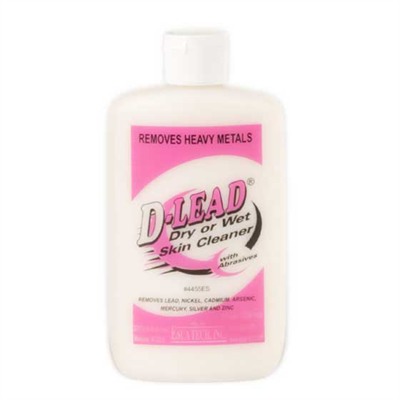Shooting Hygiene
|
Vertical Divider
Any amount of lead exposure is harmful to human health. People using firearms, handling ammunition or visiting shooting ranges are at risk of inhaling or swallowing lead, or to a lesser extent, absorbing lead through the skin.
How are we exposed to lead? Lead is present in most types of ammunition. It can be found in the projectile and the primer (the explosive that ignites gunpowder) of ammunition. Lead in the primer and the outer surface of the projectile is vaporized and released into the air after a firearm is discharged. Lead dust and fragments are also released when the projectile impacts solid surfaces. For these reasons, surfaces in shooting ranges may be contaminated with fine lead dust. This dust can also be breathed in and swallowed. Lead dust may be suspended in the air or stick to people’s hands, hair, face, clothing and footwear. This dust may be transported on your body, clothing and equipment from a shooting range into a car and into your home. How can lead affect health? People with high blood-lead levels rarely show obvious symptoms. However, exposure can cause:
Practice good hygiene Good hygiene practices can reduce the risk of lead exposure.
Wear personal protective equipment. Limit lead exposure by: • Using clothing and shoes dedicated to shooting activities or wearing disposable coveralls. Clothes used for shooting should always be washed separately from general laundry. • Wearing gloves when shooting, handling ammunition, casings or when cleaning handguns. |
D-Lead removes lead and other heavy metals from your skin and other surfaces.D-Wipe Towels are convenient one-use wipes that are portable and can be used on the bench or at the range. D-Lead Dry or Wet Skin Cleaner cleans and conditions the skin with or without water.
How can I reduce lead exposure?
Choice of ammunition In the past, lead-based ammunition has been used because of its high density, lower cost and longer shelf life. However, alternatives to lead ammunition are available. • If possible, use lead-free ammunition - ammunition that replaces lead-based primers with safer alternatives and/or ammunition that uses lead-free or jacketed projectiles that have a lead core covered with a copper or nylon coating. • If available, use shooting ranges that encourage patrons to use lead-free ammunition. Check the ventilation at your shooting range Poor ventilation of indoor shooting ranges may result in unnecessary exposure to lead vapor and dust (good ventilation removes some lead vapor). If the range regularly appears ‘smoky’ or you have a metallic taste in your mouth it is likely that ventilation is poor. Try to use a shooting range with adequate ventilation or use an outdoor range. Protect your family Don’t bring lead home with you Lead is ‘sticky’ and can be transported from a shooting range on your body, clothes and equipment, into a car and your home. This may expose your family and children. Always wash or shower and change clothes before leaving a shooting range. Your grandchildren are especially at risk Think twice before taking children to a shooting range and take the steps described here to ensure your body and clothing are free of lead dust before embracing children or handling toys and personal effects. Talk to your doctor If you regularly visit shooting ranges let your doctor know and get your blood lead level tested. Choose the right shooting range Before using a shooting range consider the following: • Is it well ventilated? • Are the range and all communal areas clean and free of visible dust? • Does it promote the use of lead-free ammunition and require good hygiene practices? • Does it offer change rooms, lockers and showers? |

